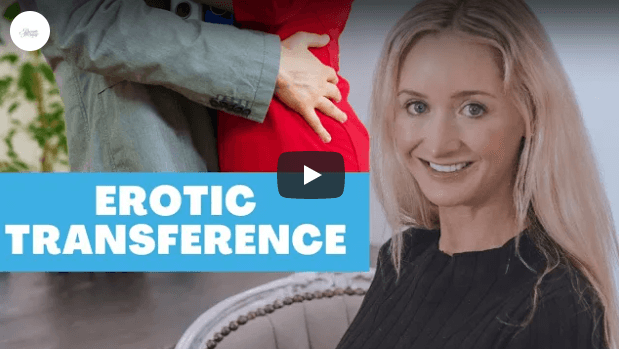6 Qualities in a Partner That Provide the Best Chance of a Healthy Relationship
18th December 2020Limerence is a state of romantic infatuation, and a condition that can be hard to discern as it presents in a very similar expression to falling in love. In reality, it’s a multi-stage process of projecting unmet needs onto another person. One that’s rooted in trauma often related to the relationship between primary caregivers in childhood which results in developmental issues, manifesting as insecure attachment styles.
Let’s take a closer look.
What Kind Of Trauma Causes Limerence?
The way you develop as a child has a huge bearing on how you interact and engage with romantic partners later on in life. When you have a supportive, nurturing upbringing, this will result in a mostly secure attachment style. But, if during childhood, you never received the emotional support, validation, and love you required, it often seeds the ongoing narratives of the fear of abandonment and fear of intimacy.
This patterning can then lead to interactions where you project these insecurities and unmet needs onto your potential love interests. You unconsciously perceive these people as being able to fulfill the need(s) that were never met in your developmental years. This unconscious response leads to the experience of limerence, as you idealise the objects of your desires – often referred to as limerent objects – as “The One.” You see them as being able to solve all of your problems.
However, if you enter into a relationship with your limerent object, you still retain all the wounding of your trauma from childhood. The relationship may ease some of the symptoms, but, really, it’s serving as a form of coping mechanism. One that prevents you from addressing the root cause of the insecure attachment style. That doesn’t mean to say if you enter into a relationship with a limerent object it can’t eventually grow into something authentic. But there must be an awareness that helps you work through your current patterning to establish whether or not there is a real loving connection beneath the unconscious projections of unmet needs.
Limerence Symptoms
- Feeling an intense romantic attraction for someone that’s more than just desire
- There is a tendency to fantasise about the love interest (limerent objects) often perceiving them as being your rescuer
- Obsessively-compulsively looking for signs of similarities between yourself and limerent object
- Experiencing deep feelings of ecstasy and/or euphoria when you’re around the person you’re desiring
- Consciously trying to engineer/manipulate situations to spend more time or coincidentally bump into your love interest
- Entering into a state of deep idealisation (overlooking all of the flaws)
- Obsessing over all of the fine details of their life (becoming intrusive/overbearing)
- Holding the belief that this person is your true soulmate and “the one”
- Experiencing frequent and intrusive thoughts about this other person
- Experiencing dysregulation through impaired cognitive functioning (focus and concentration)
- Developing an anxious attachment style and worrying about the fear of rejection
- Believing you genuinely cannot live your life without them by your side
- Experiencing strong – almost uncontrollable – sexual desires for your love interest
- Pursuing the objects of your desires going against all previously held logic and reason
What Does Limerence Feel Like?
When the first point of contact is made between a new limerent object, you’ll likely find yourself in a state of overarousal. Your heart rate might increase, you might experience sweating and your pupils may also dilate. This often leads to sexual arousal, which is felt as more of a whole-body felt-physical experience. Noradrenaline triggers a state of arousal on both the brain and autonomic nervous system, which can feel both exciting and exhilarating.
When you have an encounter with your limerent object, it doesn’t function as a regular reward-based dopamine release. It’s an incredibly heightened experience that can oftentimes feel euphoric. It’s an intoxicating emotional experience, which is believed to be driven by firing of endorphins and endocannabinoids. It’s this neurological functioning, which, in part, mimics the feeling of love that makes the condition so hard confusing.
This can then lead to the dynamic of intense bonding. You may feel a sense of peace, contentment and safety when you’re in the presence of your limerent object. This is a hormonal-based mechanic and is rooted specifically in the release of oxytocin and vasopressin, which both regulates and facilitates the bonding process and ultimately leads to love. This can be an important variable to be aware of if you happen to thrive more on emotional connection over sexual arousal.
All of this combined can then lead to the stage, which can be framed as ‘person addiction.’ Once you’ve had a taste of your limerent object who’s fulfilling long unmet needs, it can cause you to chase the dopamine rewards, exhibiting behaviours that you would never normally engage in. It can be likened to the process addicts go through in craving their “fix”, as the neurological changes addicts experience creates an all-consuming need to acquire the substance that is fuelling their addiction. The same mechanic is also true at play here within person addiction phase of limerence.
Limerence vs. Love: What’s the Difference?
The difficulty in identifying limerence is that many of the symptoms function similarly to the experience of falling in love. And so, there’s a sense of distortion that sets in, which clouds your rational and logical thought. You may believe you’ve found your one true soulmate… But there are some very key differences between love and limerence, that once you’re aware of, will help you become more discerning of what is true authentic love and what is, in fact, limerence serving as a form of trauma response.
Similarities Between Love
- You feel incredibly drawn to one specific person. When you experience a state of limerence, it’s very similar to the experience of falling in love. There is a very felt-physical, mental, emotional and oftentimes spiritual sense of attraction. This can often mimic the early stages of falling in love with someone.
- Just as love can strike at any time when we least suspect it, you can find yourself in a state of limerence with the most unlikely of people. Exactly as it is with love. The attraction might not make any logical sense, but the felt experience of this attraction will be just as real as what you perceive as love.
The Differences From Love
- One of the main mechanics of limerence is believing that the object of your desire will somehow complete and/or save you. In reality, this isn’t the expression of a mutual loving relationship, but a form of trauma response/bonding that relies on using your limerent object as a way of alleviating your burden by fulfilling the needs that were never met in the developmental stages of adulthood.
- Limerence can take such a hold, that, even if there are red flags and all signs of incompatibility you’d ordinarily recognise, you disregard them. Instead, you go all out in a desperate attempt to “acquire” this person. You idealise them, put them on a pedestal and want to be with them no matter the cost. This is not authentic love, but a state of infatuation.
- There can also be a sense of neglecting your own needs in the form of people pleasing to increase the chances of being with your limerent object. Or, reducing the odds of being rejected by them. But this is giving up on yourself and your needs is not a feature of a healthy mutual loving and respectful relationship, as the dynamic is skewed towards appeasement in place of genuine connection.
- Another mechanic of limerence that separates it from true love is the pattern of avoidance. Limerence may manifest as a form of the fear of real intimacy because of underlying abandonment issues in early childhood development. This makes the distance created within limerence enable that form of obsessing without committing fully to a person in a genuine loving relationship. The idea of love is present but none of the risk is involved.
What Are The Three Stages Of Limerence?
Limerence is more than just a state of infatuation and occurs in three distinct stages. It begins as you become attracted to your limerent object, and ends with the realisation that this person is actually unobtainable, leading to a process of letting go. Here’s a brief outline of how the condition plays out:
1. Infatuation
The idea that the person you’re seeking is unobtainable makes them immensely more attractive than all other people within your social circle. During this stage, you might exhibit a compulsive-addictive form of patterning, which causes you to think about your limerent object excessively all day. You may experience stress, heart palpitations, anxiety and other intrusive thoughts that distract from your daily tasks.
2. Crystallisation
As the infatuation stage passes quickly, it leads to the second stage, which sees you investing even more into the idea of this person being the solution to all your problems. At this stage, you begin to idealise your limerent object, placing them on a pedestal, and losing all sense of logic that might otherwise enable you to see the incompatibilities between you – as well as their obvious flaws.
3. Deterioration
The final stage occurs when the realisation dawns that you’ll never have the relationship you’re desiring with your limerent object. This stage is rooted in disappointment, despondency, and dismay, as you enter the process of letting go of this person. This feeling of loss can also mirror the grieving process, as the infatuation and attachment have been so strong. Despite the fact it was rooted in a form of trauma response/bonding and insecure attachment style.
Living With Limerence
Part of the process of living with limerence is knowing how it functions, so you can bring more awareness to the patterns that are serving as dysfunction tendencies causing your mental and emotional dysregulation. The more you become aware of your pattern of behaviour which is affecting your choices, the more you can begin to take back control of those choices by addressing the patterns that are the result of your trauma.
4 Ways to Manage Your Limerence
Limerence is all about you and your experiences that serve as the root of your infatuations. Limerent objects are merely catalysts that surface the patterns of trauma, which need addressing and contribute to your current style of relating.
Here are four pieces, which if you can anchor into, can aid in your process of recovery.
1. Realising that being with your limerent objects isn’t going to solve all of your mental and emotional dysregulation. It may even make it worse as you continue to ignore the root causes of your infatuations, preventing you from looking at the real causes of your limerence.
2. Disconnecting from your limerent objects. This is a necessary part of the recovery process. The more you interact with the individual who’s serving as a catalyst for your dysregulation, the harder it will be to come to a place of regulation, so you can work on the deeper issues at play.
3. Exploring the dynamic of your upbringing during childhood can help reveal the source of the patterning of your current behaviour. As the limerence usually stems from early life attachment trauma, it helps enormously to figure out what your attachment style is and where it comes from – which primary caregiver.
4. Identifying the person within your early childhood development who is the root cause of your limerence. This will allow you to see how you’re projecting the dynamics of that situation onto your limerent object. And it will also enable you to begin the process of transcending your trauma by working with it instead of suppressing it.
Is It Possible To Be Friends With Your Limerent Object?
If you’re currently experiencing limerence, it’s not possible to be friends with them while you’re in the process of recovery. There’s far too much emotional charge you’ll bring into the connection for there to be an authentic friendship. There is a chance that if you disconnect and process your infatuation with those limerent objects, you may be able to be friends with them in future. But it requires dedication, and commitment to go through the process of letting go and engaging in a personal journey of self-growth.
Does Limerence Need Treatment?
Depending on the intensity of your experience with limerence, it may or may not be possible to process by yourself in a form of self-sourcing. Hypothetically speaking, if you’re single and have the time, capacity and resources to be able to both recognise and work with your patterns, you may be able to process your limerence yourself. It’s not entirely out of the question. But it does require a high degree of self-awareness and discernment to look at yourself objectively enough to go through the self-healing process.
However, if you’re in a committed monogamous relationship, and find yourself experiencing limerence, this brings in a whole new set of variables to navigate, which can make processing your experience much more difficult without support. Having the capacity to bring awareness to your patterns, resisting the urge of emotional cheating and sexual infidelity while maintaining your primary relationship can put a big strain on your mental and emotional capacity. When you combine that with the associated stress, anxiety and surfacing of your developmental wounding at the same time, it can make limerence extremely difficult to manage by yourself.
These are two very opposite ends of the spectrum. Self-sourcing can be possible with limerence. But if you do require assistance, exploring treatments/therapies such as counselling, cognitive behavioural therapy (CBT), relationship counselling and other forms of talk-based therapy can be effective in helping you recognise and address the underlying traumas that are serving as the source of your limerence.
















